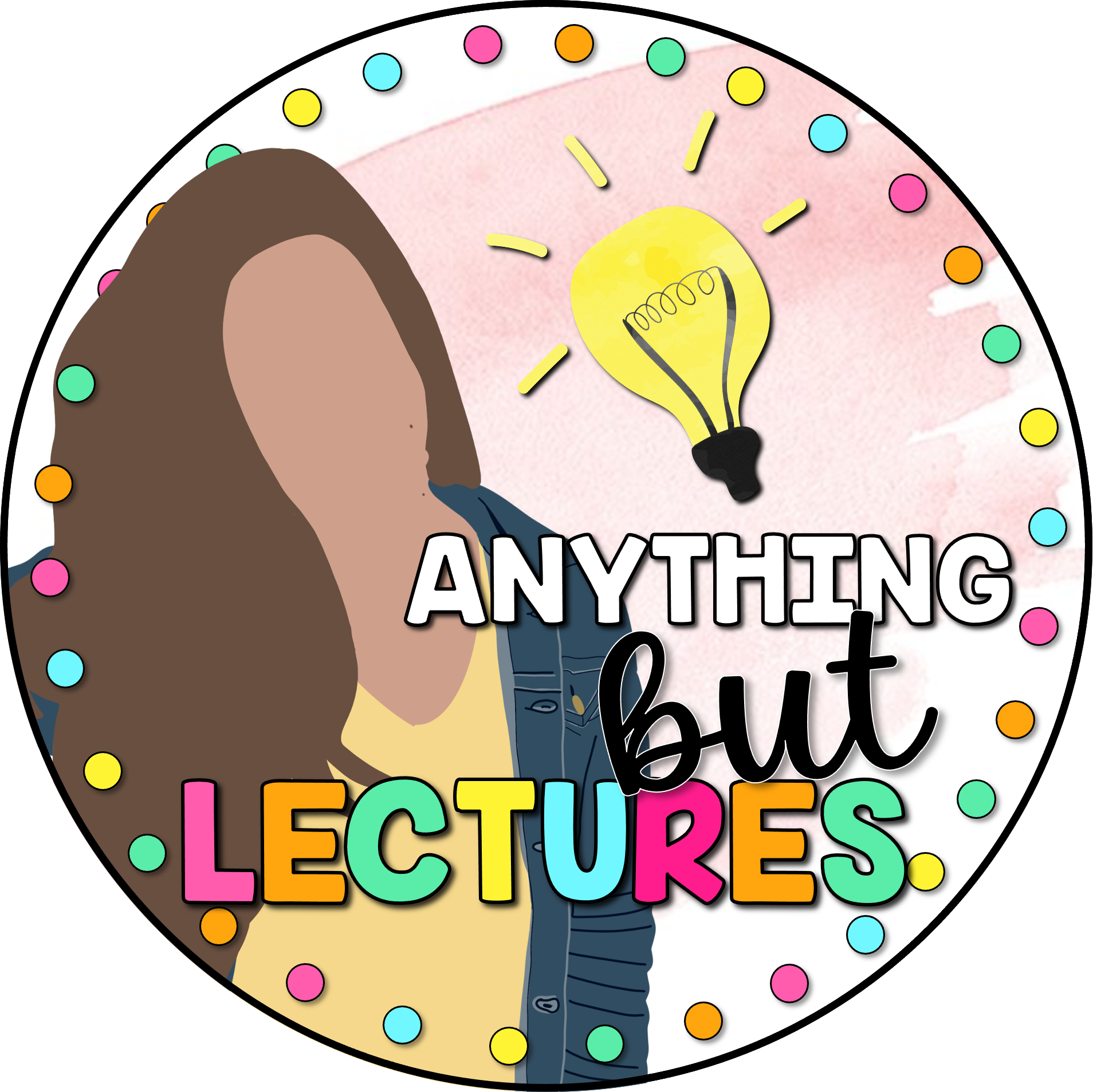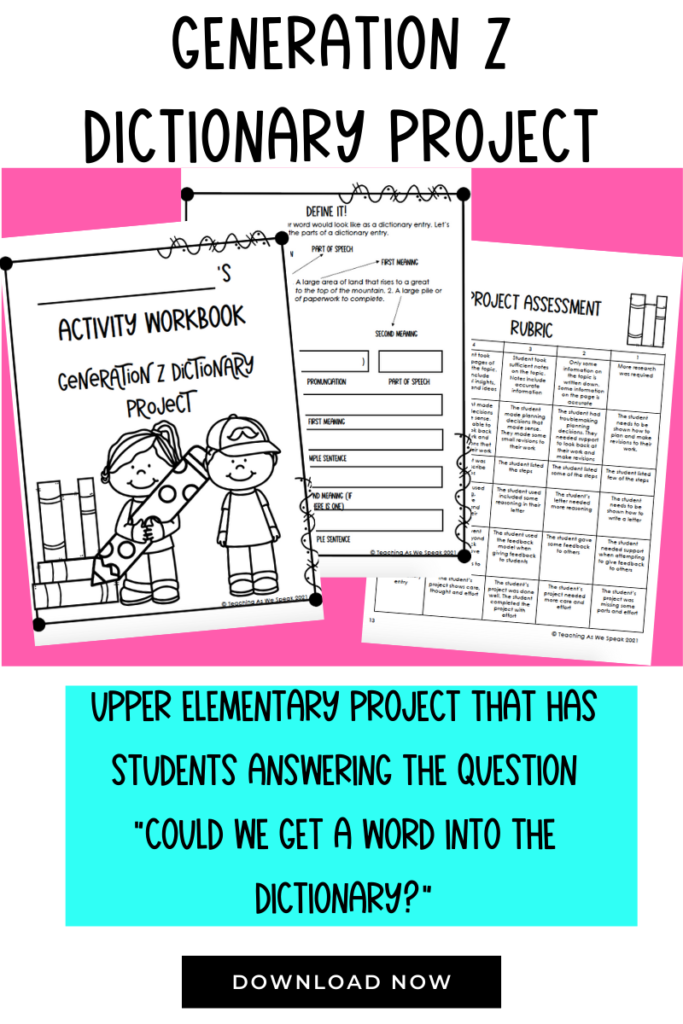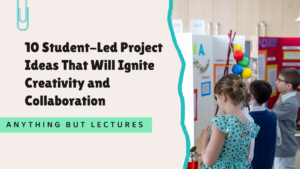As teachers, we all have skills that we need to teach, but never have time for. Teaching dictionary skills is one of them. Today, I’m sharing how to teach dictionary skills to elementary students with one project.
Using project-based learning, students will not only learn how to reference a dictionary but the history of how they were created, who is in charge of dictionaries and much, much more!
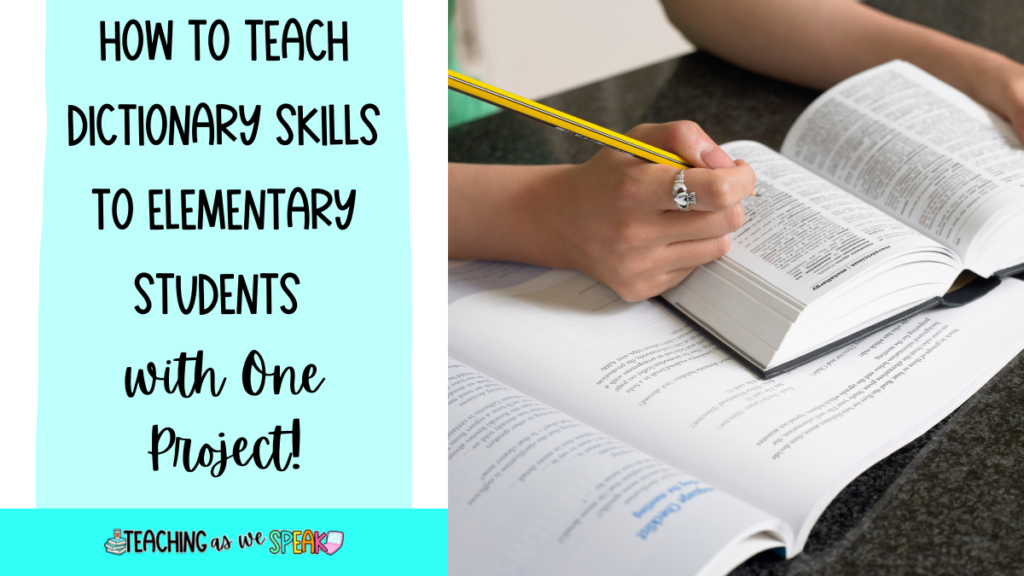
How to Teach Dictionary Skills with One Guiding Question
Kids love talking about themselves and the trends that they follow. Something that is always a trend is language or slang. Get some Generation Z kids talking about terms like ‘slay’ and ‘spilling the tea’, and they’ll go on for hours.
So let’s bring what we know about students into our teaching.
Firstly, I wanted to create a project that had students learning about referencing skills using the dictionary. Using project-based learning, I thought I could teach this, as well as many other ELA skills.
In project-based learning, students are learning skills through research and project creation. Firstly, there is a guiding question that students have asked pre-learning, which will be answered by the students themselves.
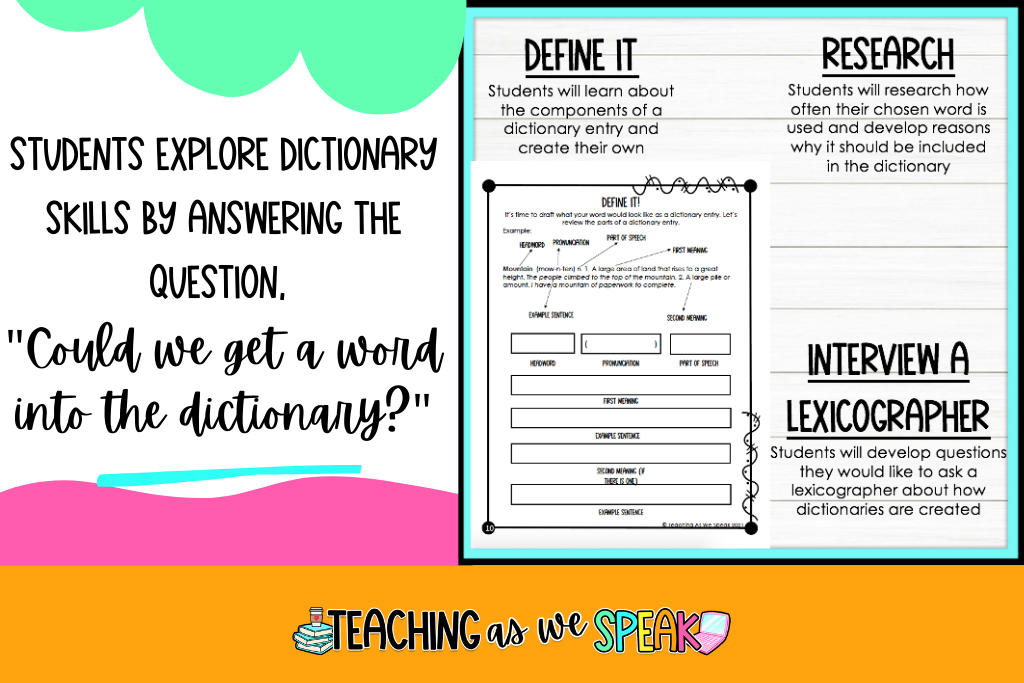
So the guiding question for the project became “could we get a word into the dictionary?”.
Want to learn more about project-based learning and guiding questions? Download the free Beginner’s Guide to Project-Based Learning.
The Project Itself
Using this guiding question, students would then need to create something. I wanted them to choose a word they felt should be included in the dictionary. Then, they would create an actual dictionary entry for that specific word. This one lesson in the Generation Z Dictionary Project would encompass the goal, which was finding how to teach dictionary skills to students.
This one lesson in the project includes:
- The proper spelling of the word
- The pronunciation
- The part of speech (noun, adjective, adverb…)
- The definition(s) of the word
- Context (forming a sentence using the word)
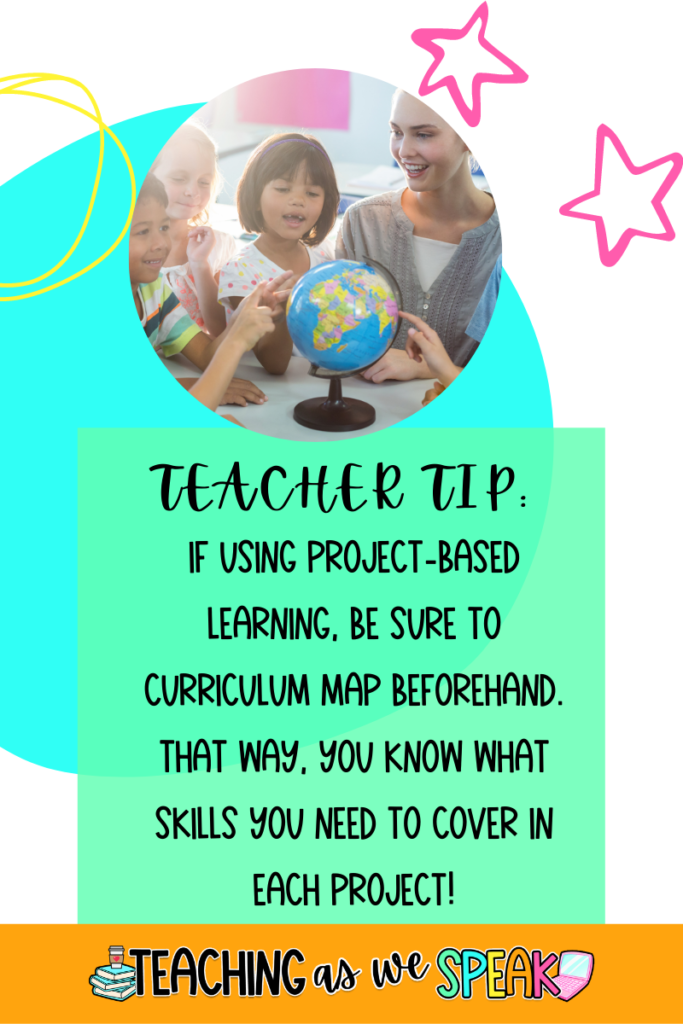
It wasn’t enough to just create a definition of the word. This would not answer the question “Could we get a word into the dictionary?”. Students would need to research how a word gets added to the dictionary. Through research, students are learning that a word needs to be proven it is used by a large portion of society. Also, its definition needs to be agreed upon by the people that use it.
But how would they apply this research? Students would write a persuasive letter to a lexicographer or a dictionary publishing company, outlining the reasons why their word should be included in the dictionary.
Click here to check out the Generation Z Dictionary Project.
The Skills Taught Within the Project
Through the guiding question, “could we get a word into the dictionary?” I knew there were several skills I wanted students to learn. Using curriculum mapping, I knew the specific skills I wanted to teach at the time of this 3-week project. The Generation Z Dictionary Project includes all of these skills:
- Interviewing skills
- Research skills
- Using context clues to breakdown meaning
- Self-reflection skills
- Interviewing skills
- Procedural writing
- Dictionary skills
- Persuasive writing
- Giving feedback to peers
Click here to check out a blog post about curriculum mapping.
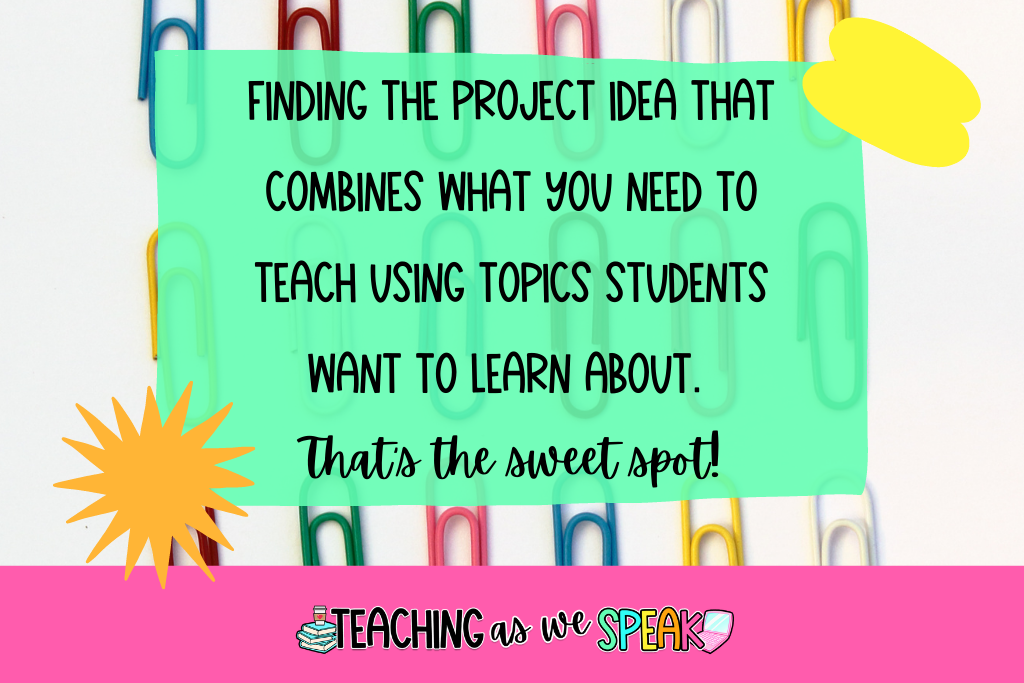
How to Use This Resource
This project was created for students in grades 4, 5 and 6. For you American teachers, I teach in Canada where elementary school goes up to grade 6.
Many teachers use projects as a way to assess the students post-learning. Many teachers even use them as a fun way to fill time at the end of the term/year (I am so guilty of this!).
However, project-based learning is not the same. Students are learning by doing the project itself. Click here to check out my blog post about the difference between projects and project-based learning.
I recommend using this project if you:
- Need to teach the skills I listed above.
- Are looking for a boost of student engagement
- Are interested in the topic and feel that your students will be too
How to Teach Dictionary Skills-How to Assess
As the teacher, you are observing, guiding and providing feedback throughout the project. In addition, the students themselves are providing feedback to their peers regularly.
The Generation Z Dictionary Project includes a rubric for you to evaluated students. Specifically, this rubric offers feedback on the following:
- Research & information gathering
- Planning and critical thinking
- Procedure Writing
- Persuasive writing
- Peer feedback
- Final dictionary entry
Final Thoughts
To conclude, I hope this post sparked some creativity in you. I hope it made you see that project-based learning is a great way to teach those skills that are often considered a pain point for teachers to teach.
Have any questions? Comment down below!
PS-Don’t forget to grab the free Beginner’s Guide to Project-Based Learning by clicking here!
